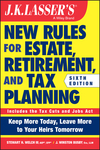5 Tax Things to Know About Selling Your Home
The housing market is hot in many locations across the country and sellers are seeing sizable gains. This is so even though mortgage rates are on the rise. Of course, some homeowners are not as fortunate and may have a loss when they sell their homes. Here are 5 tax things to know about home sales.
1. Home sale exclusion creates tax-free gain up to set amounts
Gain on the sale of a principal residence is excludable from gross income up to $250,000, or $500,000 on a joint return. The $500,000 exclusion also applies to a widow(er) if the sale is within two years of the spouse’s death. To claim this tax break, usually you must own and live in your home for at least two of the five years preceding the date of sale. This qualification is referred to as the ownership and use tests. Some points to note:
- For a married couple filing jointly, only one spouse has to meet the ownership requirement.
- The 24 months of residence can fall anywhere within the five-year period; it doesn’t have to be a single block of time.
The home sale exclusion applies only to your main residence. It does not apply to a vacation home or rental property.
Any gain in excess of the applicable exclusion amount is long-term capital gain. Favorable tax rates apply.
2. Gain is minimized by certain costs
Gain on the sale of a home is the difference between your cost basis and the proceeds received. Your cost basis is your initial investment, plus any capital improvements. Capital improvements are defined as costs that add value to the home, prolong its useful life, or adapt it to new uses. Examples of capital improvements include:
- A new roof
- Additions (e.g., a new room, a swimming pool)
- Renovations (e.g., a new kitchen)
- Adding central air conditioning
Some settlement costs may also be included in basis, such as title fees, title insurance, legal fees, survey fees, and recording fees.
Whether and to what extent you use a mortgage to purchase a home has no impact for tax purposes on your basis.
3. Ownership and use tests may be modified in some situations
If you become physically or mentally unable to care for yourself, and you use the residence as your principal residence for 12 months in the five years preceding the sale or exchange, any time spent living in a licensed care facility (such as a nursing home) counts toward the two-year residence requirement.
The five-year period is extended if the owner or spouse is on official extended duty in the Uniformed Services, the Foreign Service, or the intelligence community. The suspension may be up to 10 years.
You may qualify for a partial exclusion even if you don’t meet the ownership and use tests if the main reason for the sale is a change in work location, a health issue, or an unforeseen event (e.g., destruction of the home by a casualty; divorce unemployment).
4. Home sale exclusion can be used multiple times
There’s no limit on the number of times you can use the home sale exclusion. The only condition is that it can’t be used more than once every two years. If you sell another home within two years but don’t claim the exclusion, you can then use the exclusion on yet another sale as long as the exclusion is used only once during a two-year period.
5. Loss is not deductible
If you sell your home at a loss, you cannot deduct it. The reason: The home you live in is considered personal use property for which no loss deduction is allowed. This is so even if you think of your home as an investment.
Conclusion
Homeowners who are not yet contemplating a sale are advised to retain good records of capital improvements. This will enable them to minimize gain when they eventually sell their home.



